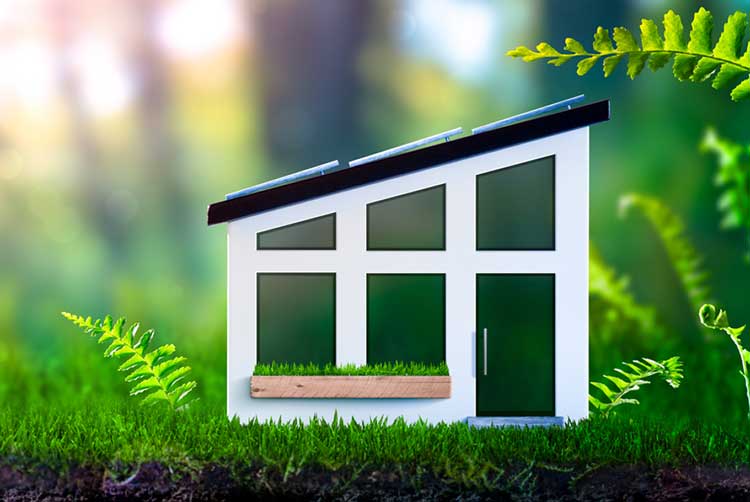Resources, Rebates, and Tax Credits to Help You Go Green at Home
Last updated July 2025

Our discussion on how to save energy at home briefly hits on more than 30 changes you can make in and around your home, from cheap-yet-effective steps to upgrades that require upfront spending, but quickly pay for themselves from lower utility bills to systems and renovations that minimize what you pull off the grid, but come at steep prices.
Often, the extra costs of energy-saving improvements can be reduced by tax credits and utility company rebates. But on July 4, President Trump signed into law a sprawling bill that ended generous tax credits for green-energy projects.
Act Fast to Take Advantage of Canceled Federal Tax Credits
You can still claim the “Energy Efficient Home Improvement Credit” when preparing your 2025 tax return, but you must complete and pay for eligible projects by December 31. That credit provides tax breaks to homeowners who make green improvements to their primary residences. The credit is equal to 30 percent of the cost of the following types of eligible projects; for some there are individual annual maximum allowable credits:
- Air-sealing and insulation improvements—no cap
- Central ACs—$300 cap for most systems
- Energy audits—$150 cap
- Exterior doors—$250 per door, $500 limit for multiple doors
- Gas and oil furnaces—$600 cap for units with 97+ AFUE
- Windows and skylights—$600 cap
If you do more than one of the projects listed above there’s a maximum tax credit of $1,200 each year.
A separate tax credit of up to $2,000 is available if you buy a qualifying heat pump, heat pump water heater, or biomass stove or boiler (for example, one that burns wood pellets). That credit also goes away at the end of 2025.
If you install a ground-source heat pump or solar panels you may qualify for a 30 percent federal tax credit with no cap. Again, you have to complete all work by the end of 2025 to get the incentive.
In most parts of the U.S., utility companies offer rebate programs for energy-saving improvements. For info on programs available in your community, check with your utility company and the Database of State Incentives for Renewables & Efficiency (DSIRE).
Rebate Programs Funded by the Inflation Reduction Act Languish
The new law that ended energy efficiency tax credits did not cancel rebate programs authorized by the Inflation Reduction Act (IRA) of 2022. But since taking office, President Trump’s administration has slowed or halted approvals for these programs, and it’s still unclear whether rebates for Illinois residents will ever launch.
The IRA allotted more than $350 billion for energy and climate programs by establishing incentives for U.S. households and businesses to shift to technologies that consume less energy and cut greenhouse-gas emissions. About $80 billion of that was earmarked for rebates of up to $14,000 per household for making green energy upgrades over the next decade. The largest rebates would have encouraged households to switch to heat pumps to heat and cool their homes. These aren’t tax credits; they’re point-of-sale rebates that homeowners will receive as discounts as they make preapproved improvements.
The IRA required each state to create its own rebate program and then submit its plans to the Department of Energy for approval. Only a handful of states received funding prior to Trump’s inauguration. Since then, no new state rebate programs have launched.
Websites of most other states still report their programs will be available in 2025 but we have found it difficult to get updated info on them.
Additional Resources to Help You Go Green at Home
Consumer Reports
Ratings of appliances, lightbulbs, window AC units, etc.
Database of State Incentives for Renewables & Efficiency
Rebates and tax incentives available from utilities and governments
Earth911.com
Green tips, plus database of recycling centers and where to dispose of hazardous household waste
Efficient Windows Collaborative
Help with window selection and estimating cost savings
Energy Star
Certifies energy-efficient appliances and HVAC equipment
National Renewable Energy Laboratory
Research and publications on renewables; offers a calculator that estimates energy production and cost of solar installations
Passive House Institute U.S.
Certification and training for net-zero energy-use builders, contractors, and manufacturers
Residential Energy Services Network
Certification for energy auditors
Rewiring America
Educational resources; tracks public policy for electrification projects
Snugg Pro
User-friendly web-based energy-auditing software
YouTube.com
Thousands of DIY videos from experts (but also non-experts)
Zero Energy Project
Advice and lists of products and suppliers for home buyers, builders, and designers interested in net-zero energy-use homes

